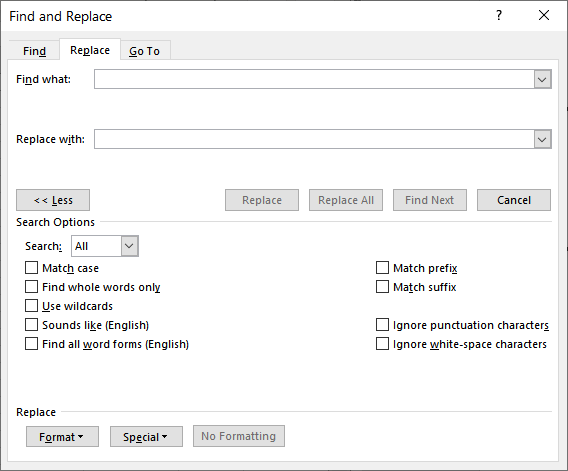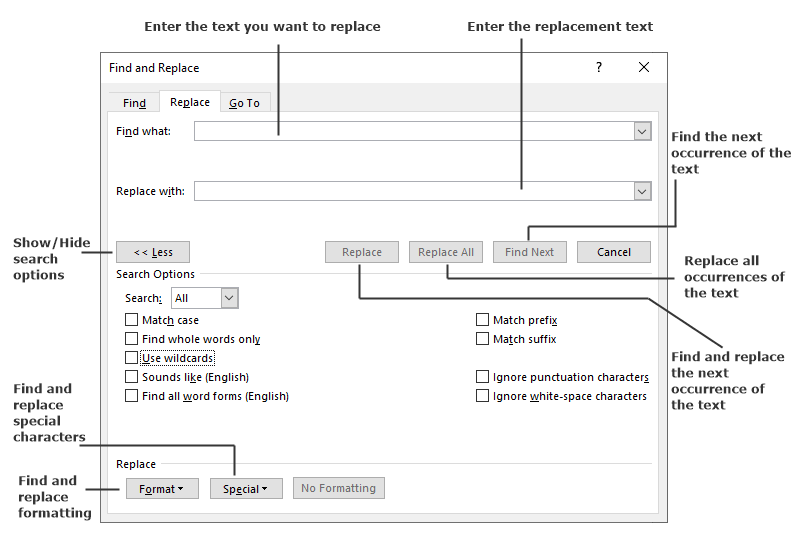


(^013) - This represents the preceding paragraph marker for the line above the numbered step.In Find What, type: In Replace With, type: \1(\2\3.Click More, then select the Use wildcards check box.Press Ctrl+H to open the Find and Replace dialog.Yes, this will mean clicking ‘Replace’ for each one, but until you are confident that you won’t replace something you shouldn’t, it’s a safer option. Only if you’re 100% sure there are no other uses of a number and the relevant trailing punctuation would you use ‘Replace All’. Be very careful with the ‘Replace All’ command - you may inadvertently replace something you don’t want to replace.Before you test this on your document, make a copy of the document and work on that until you are comfortable with what you have to do, and until you are satisfied that these steps are what you want.I have assumed that each numbered item starts a new paragraph.These steps ONLY work for manually entered numbered steps, NOT automatic numbering in Word.(also on separate lines). And convert numbered steps like (1), (2), (3), etc. He wanted to convert numbered steps like 1), 2), 3), etc. On another post on this blog, Michael commented that he had a situation where he needed to run find and replace routines (possibly using wildcards) on hundreds of documents to convert MANUALLY entered step numbers (with various trailing punctuation) to a common format ready for conversion into another type of document.


 0 kommentar(er)
0 kommentar(er)
